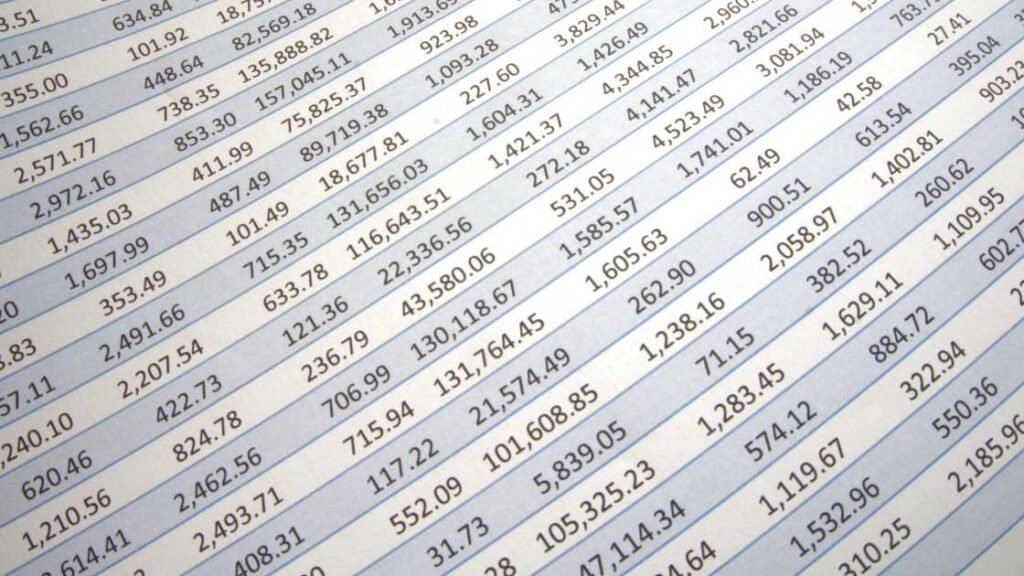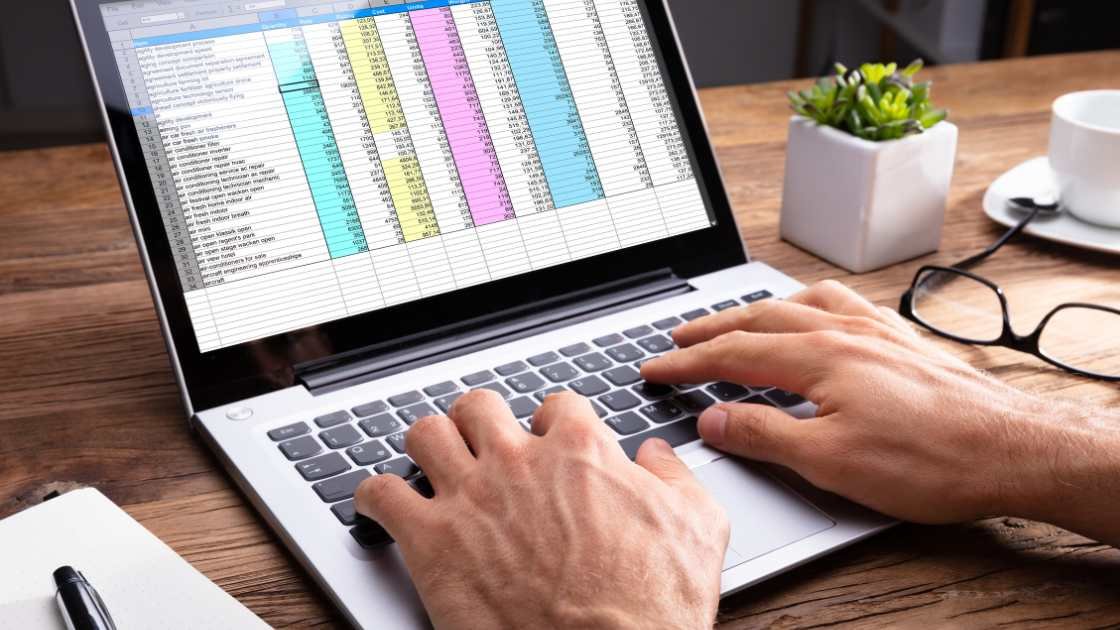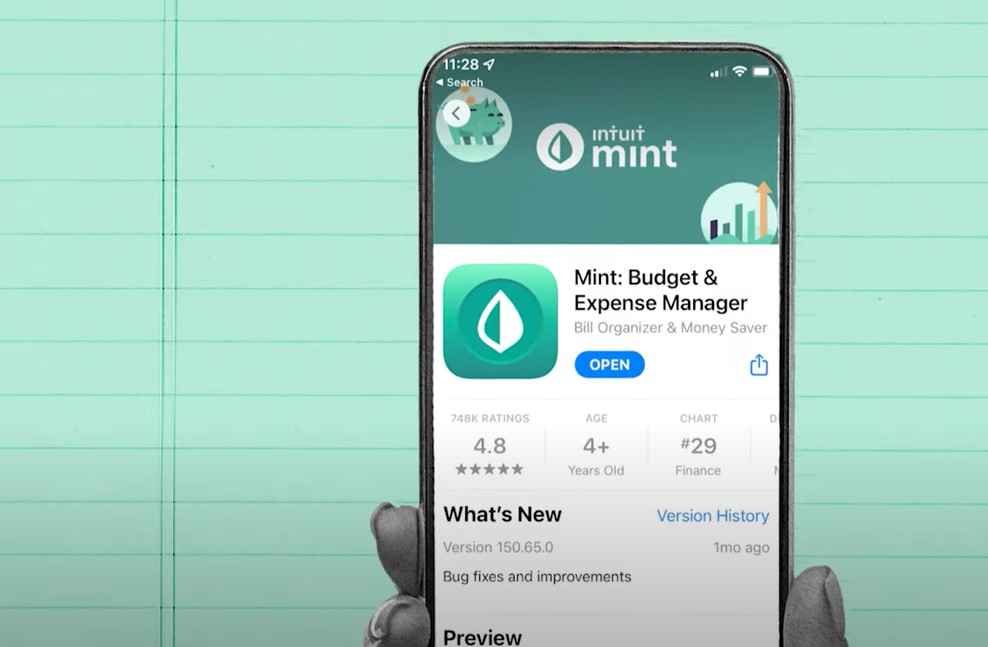To create a travel budget spreadsheet, start by listing all possible expenses and sources of income. Next, format these items into categories on software like Excel or Google Sheets.
Planning a trip requires careful financial management, and a travel budget spreadsheet is an indispensable tool for tracking your expenses and ensuring your travel plans stay on course.
Crafting a well-organized budget spreadsheet enables you to visualize your financial plan, helps to avoid overspending, and keeps your trip align with your financial constraints. Let’s explain about “How to Make a Travel Budget Spreadsheet?”
It’s necessary to consider all facets of your journey, from transportation, accommodation, and meal costs, to entertainment and emergency funds. By using a spreadsheet, you are not just guessing your expenses; you are actively managing them.
Tailoring a travel budget to your specific needs and trip details is vital for a stress-free holiday. Keeping your entries concise and your layout straightforward will make it easily navigable and highly functional.
Whether you’re a frugal backpacker or a luxury seeker, a detailed spreadsheet is key to a well-funded adventure.
Table of Contents
Toggle- Travel Budget Essentials
- Identifying Your Travel Expenses
- Estimating Transportation Costs
- Accommodation Budget Planning
- Allocating Money For Food And Dining
- Planning For Activities And Entertainment
- Incorporating Shopping And Souvenirs
- Saving For Emergencies And Unforeseen Events
- Tracking Expenses While On The Go
- Reviewing And Adjusting Your Budget Post-trip
- Frequently Asked Questions For How To Make A Travel Budget Spreadsheet
- Conclusion
Travel Budget Essentials
Crafting a travel budget spreadsheet is your first step to a worry-free adventure. It helps track expenses and saves you from financial surprises. The essentials of a travel budget set the stage for an organized trip.
Choosing The Right Spreadsheet Tools
Picking a comfortable tool is key. Google Sheets and Microsoft Excel top the list. They allow easy edits, templates, and access on-the-go. For quick access and sharing, Google Sheets is a winner. Excel offers robust features for complex planning.
Setting Up Your Spreadsheet Foundation
A solid foundation makes data manageable. Begin with these basic categories:
- Transport – Flights, trains, buses.
- Accommodation – Hotels, hostels, rentals.
- Food – Dining out, groceries.
- Activities – Tours, tickets.
- Miscellaneous – Shopping, emergencies.
Next, structure your spreadsheet with columns for estimates and actual costs. Calculate the difference to track your budget health. Don’t forget a section for notes to remind yourself of booking confirmations or budget adjustments.
Here’s an example of how to arrange your categories:
| Category | Estimated Cost | Actual Cost | Difference |
|---|---|---|---|
| Transport | $300 | $250 | $50 |
| Accommodation | $600 | $550 | $50 |
| Food | $200 | $180 | $20 |
| Activities | $150 | $130 | $20 |
| Miscellaneous | $100 | $120 | -$20 |
Don’t skip on flexibility. Unplanned expenses arise. Factor in a contingency for the unexpected. Keep revising your estimates with real numbers as your trip progresses to stay within budget.
Identifying Your Travel Expenses
Travel can lift spirits and broaden horizons, but budgeting is key to keeping adventures stress-free. Identifying travel expenses is the first step in crafting a perfect travel budget spreadsheet. A detailed view of costs ensures the journey stays within financial reach.
Fixed Vs. Variable Costs
The distinction between fixed and variable costs is important. Fixed costs, like airfare, remain unchanged regardless of activities. Variable costs, such as dining, can change based on choices and circumstances.
- Fixed Costs:
- Flights
- Accommodation
- Travel insurance
- Visas
- Variable Costs:
- Meals and entertainment
- Shopping
- Local transportation
- Tours and activities
Categories To Include
Organize expenses into clear categories within the spreadsheet. This simplifies tracking and helps avoid overspending.
| Category | Examples |
|---|---|
| Pre-travel Costs | Passports, immunizations |
| Transportation | Flights, trains, car rentals |
| Accommodation | Hotels, hostels, vacation rentals |
| Food & Dining | Restaurants, groceries, snacks |
| Activities | Museum fees, tours, event tickets |
| Emergency Funds | Unplanned expenses |
| Shopping & Souvenirs | Gifts, clothing, local goods |
| Miscellaneous | Laundry, tips, internet fees |
Include subtotals for each category to monitor spending against the budget. This keeps finances in check and reduces surprise costs.
Estimating Transportation Costs

Planning a trip means knowing how to get around. You want the best deals on transportation. Estimate your costs before you go. Use a travel budget spreadsheet to keep it all clear.
Flight Prices
Start with flights. This is often the biggest cost. Check multiple airlines and booking sites. Look for offers and discounts early. Don’t forget extra fees. Luggage and meals can add up.
Here’s how to jot down the flight prices:
Add more rows as needed
| Departure | Destination | Airline | Price |
|---|---|---|---|
| City A | City B | AirFly | $300 |
Public Transportation
Public transport saves money. Cities have buses, trains, metros. Check the costs for daily or weekly passes. It’s cheaper than single rides. Note these down:
- Type of pass (single, day, week)
- Price
- Where it’s valid (bus, metro, tram)
Car Rentals
Freedom with a rental car. Prices vary by car size and rental length. Include gas, insurance, and parking. Compare shops for best rates. Here’s a simple format:
- Choose the car size needed
- Research different rental agencies
- Record the total cost
Accommodation Budget Planning
A key component to any travel budget spreadsheet is planning for accommodations. This category often consumes a large slice of your travel funds. A detailed approach to tracking your options and potential expenses sets you up for a cost-effective trip.
Start by considering both traditional and alternative lodging solutions. Record every detail from nightly rates to location convenience to find the perfect fit for your wallet and your comfort.
Hotel And Hostel Rates
Comparing hotel and hostel rates is vital for budget travel. Prices vary widely based on location, amenities, and time of year. Develop a habit of checking multiple booking platforms to snag the best deals.
Ensure you note the cancellation policies and any extra fees. This can include taxes or service charges often excluded from the quoted price. Here’s a simple table to help organize your findings:
| Type of Accommodation | Price per Night | Amenities Included | Distance to Attractions | Cancellation Policy |
|---|---|---|---|---|
| Hotel XYZ | $100 | Wi-Fi, Breakfast | 0.5 miles | 24-hour notice |
| Hostel ABC | $50 | Wi-Fi, Lockers | 1 mile | 48-hour notice |
Alternative Lodging Options
Travelers should not overlook alternative lodging options like vacation rentals, couch surfing, or camping. These options can slash your accommodation budget significantly or even offer free stays.
Track each option’s pricing just like hotels and hostels. Don’t forget to consider factors like privacy, safety, and location. Below is a handy list to guide your alternative accommodation research:
- Vacation Rentals: Great for long stays.
- Couch Surfing: Connect with locals offering free stays.
- Camping: Costs may include campsite fees and gear rental.
Allocating Money For Food And Dining
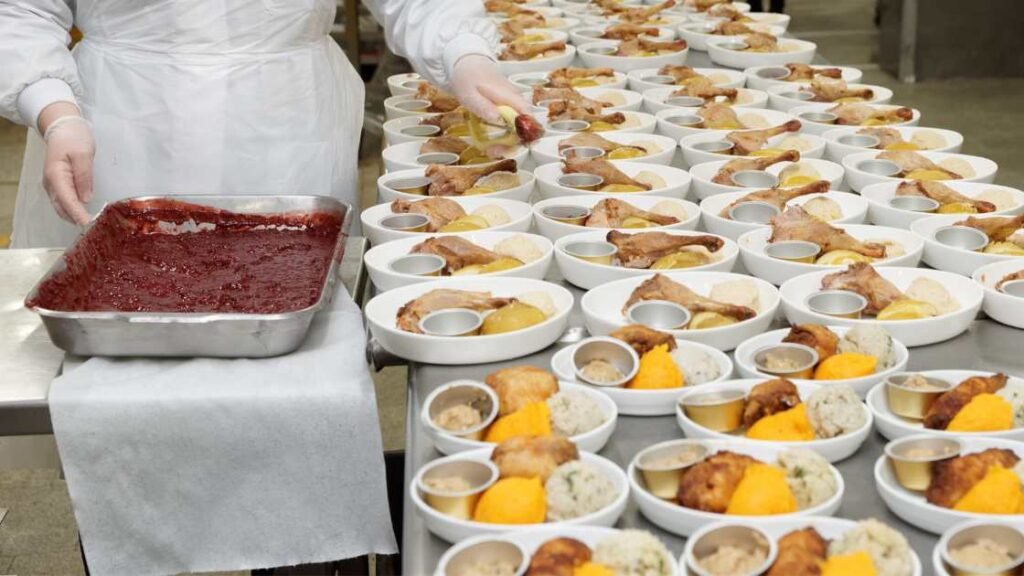
Travelers often overlook the importance of budgeting for food and dining. Yet, it can eat into your finances quicker than you think. Whether you’re a foodie or a frugal traveler, planning how much you’ll spend on meals is essential. Below, you’ll find straightforward strategies for allocating the correct amounts in your travel budget spreadsheet, focusing on daily meals and those extra indulgences we all love.
Daily Meal Estimates
Estimating daily meal costs should be your first step. Start by researching the average cost of meals in your destination. Don’t forget to include all meals: breakfast, lunch, and dinner. Below is a simple guide to help you estimate:
| Meal | Average Cost |
|---|---|
| Breakfast | $5 – $10 |
| Lunch | $10 – $15 |
| Dinner | $15 – $30 |
Consider the following factors:
- Type of restaurant
- Local vs. tourist spots
- Special dietary needs
These factors change costs. Multiply the daily totals by the number of travel days. Enter this figure into your spreadsheet.
Splurges And Treats
While keeping a watch on your budget, remember to treat yourself. Allocate a separate column for splurges and treats. These might include:
- Desserts
- Street food
- High-end dining experiences
Set aside 10-15% of your total food budget for these pleasures. Planning ensures you indulge without overspending.
- Identify must-try dishes or restaurants.
- Check their prices online.
- Add a bit extra for unexpected finds.
Add this separate amount to your travel spreadsheet. Tracking these expenses separately keeps your dining budget realistic and under control.
Planning For Activities And Entertainment
Travel budgets often focus on flights and accommodations. But the fun part of traveling includes exploring and enjoying new experiences. Activities and entertainment can eat up a budget if not planned carefully. In your travel budget spreadsheet, allocate a section for these costs. The right planning ensures you squeeze every ounce of joy from your trip without a financial hangover.
Tour Prices
Tours offer great ways to discover a destination’s heart and soul. To budget correctly, research and note down various tour prices. Consider these steps:
- Identify top must-see sites and look for corresponding tours.
- List the tours with all details including duration, inclusions, and prices.
- Check for discounts for group bookings or early reservations.
Free Attractions
Many destinations boast free attractions—parks, museums, and historic walks can be enjoyed at no cost. In your spreadsheet, add a section for these:
- Research online for free things to do in your destination.
- Organize them by location to maximize your time.
- Add them to your itinerary, noting any necessary details.
Event Costs
Events such as concerts or sports can be the highlight of a trip. Yet, they can vary greatly in cost. To avoid surprises:
| Event Type | Typical Cost Range | Notes |
|---|---|---|
| Concerts | $50-$200 | Price varies by artist and venue size |
| Sports | $20-$150 | Varies by sport and seat location |
| Theater | $30-$100 | Off-Broadway shows are often more affordable |
Capture the types of events you’re interested in and their cost ranges. Keep an eye out for ticket sales and deals.
Incorporating Shopping And Souvenirs
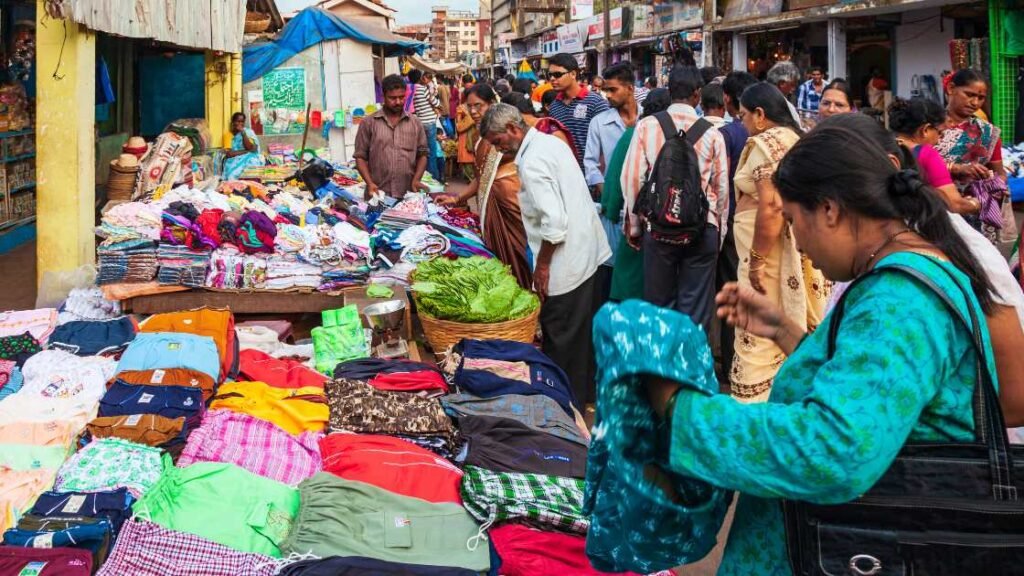
Traveling is not just about the sights; it’s also about the memories we take home in the form of souvenirs. A well-planned travel budget spreadsheet can help ensure you have allocated enough money to bring back keepsakes for yourself and loved ones. Let’s dive into balancing the desire for shopping with the practicality of budgeting.
Budgeting For Keepsakes
Knowing what you’re looking for and how much you’re willing to spend helps avoid overspending. Here are a few tips:
- Research typical souvenir costs in your destination prior to travel.
- Allocate a specific section in your spreadsheet for souvenirs.
- Divide your keepsake budget equally among travel days, if applicable.
Use a table format to itemize potential keepsake expenses:
Additional rows as needed
| Date | Item | Estimated Cost | Actual Cost |
|---|---|---|---|
| Day 1 | Local Art | $50 | |
| Day 2 | Handmade Jewelry | $30 |
Managing Impulse Purchases
It’s easy to get carried away while shopping. Impulse purchases can throw your budget off track. Stay in control with these strategies:
- Set aside a small contingency fund for unexpected finds.
- Question each purchase; do you need it, or is it a momentary desire?
- Create a list of souvenirs you truly want, and stick to it.
By dedicating portions of your budget to shopping and souvenirs, you’ll enjoy your trip without financial worries and return home with meaningful mementos.
Saving For Emergencies And Unforeseen Events
Saving for emergencies and unforeseen events is a must-do for any traveler. Life is full of surprises, especially on the road. Having a cushion in your travel budget can turn a trip mishap into a small bump rather than a journey-ending problem. Let’s dive into how to create a safety net within your travel budget spreadsheet.
Contingency Funds
It’s smart to have a Contingency Fund in your budget. This fund is like a safety belt for your travel plans. Unexpected costs can appear at any time. Think about these steps:
- Decide on a percentage of your total budget to put aside.
- Include extra money for each day of your trip.
- Keep this money separate from your main spending funds.
As a rule, aim for at least 10-15% of your overall budget to ensure peace of mind.
Insurance Needs
Insurance is your shields against massive unexpected costs. Travel insurance can cover:
| Insurance Type | Covers |
|---|---|
| Health | Illness or injury |
| Travel | Cancelled flights and lost baggage |
| Gadget | Stolen or damaged tech |
Compare plans online and choose one that suits your trip and your pocket. Include the insurance cost in your spreadsheet and rest easy, knowing you’re covered.
Tracking Expenses While On The Go
Tracking expenses while on the go ensures you stay within your travel budget. Real-time updates help you manage your funds effectively, preventing overspending. Let’s explore the tools that make this process seamless and stress-free.
Mobile Budgeting Apps
Smartphone apps bring budgeting to your fingertips. They are convenient and user-friendly. Many apps sync with your bank account to track spending as it happens. Choose one with features like receipt scanning, budget categories, and offline access.
- Receipt scanning instantly logs expenses.
- Budget categories sort your spending.
- Offline access ensures updates without Wi-Fi.
Popular apps include Mint, YNAB, and Expensify. Each offers unique features suited to different travel styles.
Template Adjustments For Real-time Spending
Your travel budget spreadsheet should be flexible. Adjust categories as you spend to see where your money goes.
Include columns for:
| Item | Estimated Cost | Actual Cost | Difference |
|---|---|---|---|
| Hotel | $150 | $135 | -$15 |
| Food | $50 | $60 | +$10 |
Highlight overages in red to catch overspending. Update your spreadsheet daily. Utilize spreadsheet functions like sum and average to monitor your cash flow.
Reviewing And Adjusting Your Budget Post-trip
Returning from a trip often brings a mix of joy and blues. A critical step, often overlooked, is reviewing your travel budget. This post-travel analysis is vital to understand your spending patterns and prepare even better for future adventures. Let’s dive into how you can analyze and adjust your post-trip budget for smarter planning.
Analyzing Spending Habits
Gather all your receipts and expenses from the trip. Input them into your travel budget spreadsheet. This clear view will highlight your spending habits.
- Did you overspend on dining out?
- Did you find transportation costlier than expected?
- Were there unplanned expenses?
Create a category-wise breakdown. Use a simple table to compare your planned vs. actual spending.
Add more rows as necessary
| Category | Planned Spend | Actual Spend | Difference |
|---|---|---|---|
| Accommodation | $500 | $600 | +$100 |
| Food | $250 | $300 | +$50 |
| Transport | $150 | $200 | +$50 |
Look for patterns in spending more or less than planned. Understand the reasons behind them.
Lessons For Future Budgeting
Learning from your travels is crucial. It helps you budget better next time. Reflect on the differences in your budget. Think about what you would do differently.
- Set aside a buffer for unexpected expenses.
- Adjust your daily food budget if it was too low or high.
- Increase the travel and leisure allowance.
Consider what worked well and replicate it.
Did booking early save money on flights?
Did choosing local eateries over tourist spots keep the food costs down?
Document these insights in your spreadsheet. They will serve as valuable references. Now, your budget for your next trip will be more accurate and flexible.
Frequently Asked Questions For How To Make A Travel Budget Spreadsheet
What Is A Travel Budget Spreadsheet?
A travel budget spreadsheet is a tool designed to organize your travel expenses. It helps plan your trip’s finances, allowing you to allocate funds for various categories like accommodation, food, transportation, and activities.
How Do I Create A Travel Budget Template?
Start by opening a spreadsheet program and set up categories for all potential expenses. Include columns for estimated costs, actual costs, and the difference to track spending against your budget. Customize it according to your travel plans.
What Should Be Included In A Travel Budget?
Your travel budget should include transportation costs, accommodations, food, activities, emergency funds, and miscellaneous expenses like souvenirs or tips. Estimate each category based on research or past trip experiences to prevent overspending.
Can A Spreadsheet Help Save Money For Travel?
Yes, a spreadsheet can help you track spending habits, identify unnecessary expenses, and reallocate those funds towards your travel savings. It serves as a visual reminder of your financial goals and progress.
Conclusion
Crafting your travel budget spreadsheet is the first step towards a financially savvy adventure. Arm yourself with this powerful tool and navigate your expenses with ease. With each journey, refine your template to best suit your travel goals. Enjoy the freedom and peace of mind that come with being prepared—your wallet will thank you.
Happy travels!

